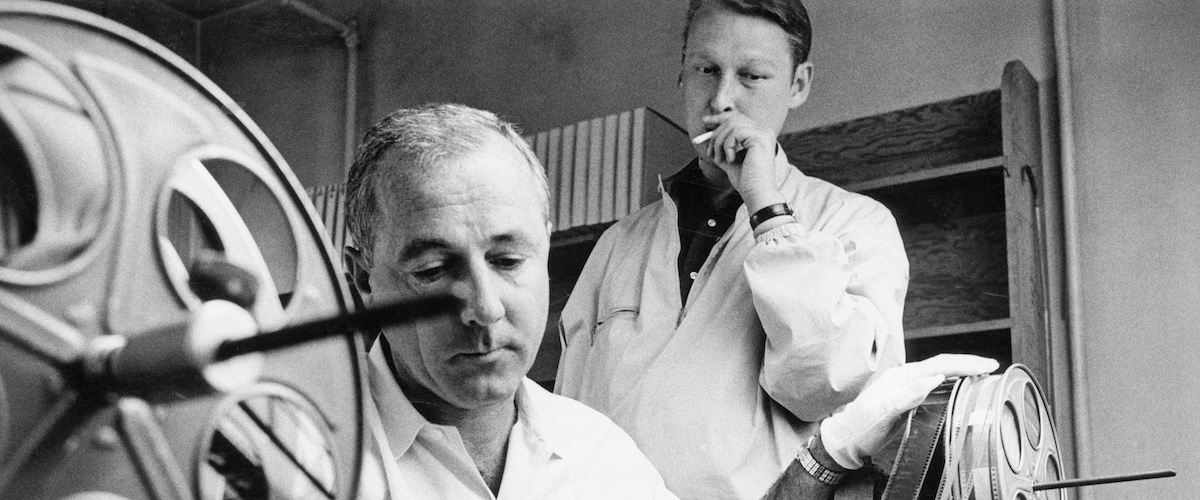Douglas McGrath’s “Becoming Mike Nichols,” which premiered at the Sundance Film Festival before its airing on HBO on Monday, February 22nd, offers fans of the beloved director a look at the formative years of his career, focusing on four major chapters of his life. Conveyed via two interviews done with Mike Nichols and theater director Jack O’Brien in the summer of 2014 at the Golden Theatre, where “An Evening with Nichols and May” premiered in 1960—one in front of a paying audience, and one not—McGrath’s film attempts to capture how a seven-year-old immigrant from Nazi Germany became one of the most influential and award-winning directors of all time. Sadly, while the film is undeniably interesting on an anecdotal level, it often feels like an interesting special feature on a Criterion Blu-ray disc (it would have fit perfectly on their upcoming release of “The Graduate”) more than it does a documentary feature that stands on its own. Not only is it disappointingly short (72 minutes), but it feels choppily edited at times and O’Brien often misses the follow-up, allowing interesting discussions about directing and filmmaking by Nichols to go zipping by. The result is a film that’s packed with stories more than insight.
So how did this young man “become Mike Nichols”? Unsurprisingly to those who know his history, Nichols and O’Brien start with Elaine May. The first fifteen minutes of “Becoming Mike Nichols” are very much a love letter to Ms. May—her talent, her beauty, her wit. Nichols speaks more about what May could do on a stage than how he contributed to their legendary comic pairing, and it’s interesting to consider that aspect of his career—that Nichols was incredibly good at surrounding himself with the right talents at the right time. I don’t mean that as insult, but would Nichols be “Nichols” without Elaine May, Walter Matthau, Robert Redford, Elizabeth Taylor or Dustin Hoffman? Probably not. He had an incredible skill for finding talent and then bringing out their best.
After the May chapter, Nichols & O’Brien go back for a brief bit about Nichols’ childhood and immigrant background. He speaks interestingly about seeing Marlon Brando, Jessica Tandy and Karl Malden in “A Streetcar Named Desire” on Broadway and how it changed him forever. To the day of this final interview he ever gave, he considers that performance influential, calling it “written in fire.” He learned about life watching movies at the Beacon, not even speaking much English, and he was working with May at the Golden while Richard Burton was in “Camelot” nearby, the two becoming friends. When “Who’s Afraid of Virginia Woolf?” presented itself as a film possibility, Nichols took the chance to suggest that he direct it, even though he didn’t have the experience or knowledge to do so. He turned to friend Anthony Perkins for a three-day crash course in movie photography before shooting, and he watched “A Place in the Sun” 150 times. The proclamation that there’s nothing you can’t learn about filmmaking from George Stevens’ film should make you want to watch it again.
The Stevens line is the perfect example of why “Becoming Mike Nichols” falls short of its potential beyond the clearly interesting source of trivia it provides (there’s some great stuff in the final chapter, especially about the ending, on “The Graduate” too, if you’re wondering). Nichols talks about how much “A Place in the Sun” mattered and we see a brief shot of the movie, and then, zip, we’re on. I so wanted to talk about why and how “A Streetcar Named Desire” and “A Place in the Sun” were reflected in his work, and I’m not entirely convinced that Mike Nichols became who he was after “The Graduate,” at which point the interview abruptly ends, without even an analysis of how these early lessons are reflected through the rest of his illustrious career. We see posters and playbills for key productions, but that’s it. Perhaps a life and career as impressive as Nichols’ needs to be segmented to be appreciated, but I’d be interested if O’Brien and others who clearly know and adore Nichols followed through on this film’s set-up and talked about what happened to stage and screen after “Becoming Mike Nichols.”




















